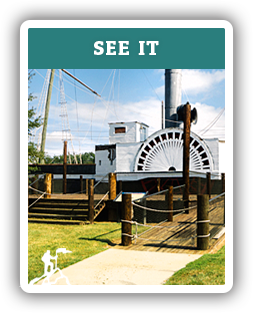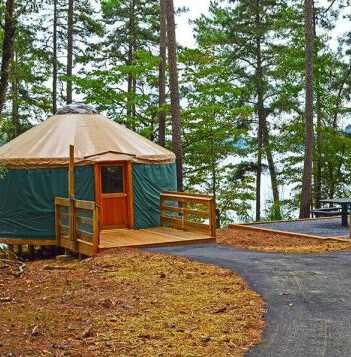One of the longest settled areas in the state, Darien, Georgia has heaping servings of history, outdoor activities and fresh seafood as you’d expect along Georgia’s Coast
Established as a port on the Altamaha River by Gen. James Oglethorpe’s Scottish Highlanders in 1736, Darien is the second-oldest planned town in Georgia. The waterfront still bustles with activity as shrimpers bring in their treasured catch. It doesn’t take long for the local seafood restaurants to cook up the delectable coastal treats.
The historic areas along the waterfront can be best uncovered with the Historic Darien Walking Tour. The Darien Walking Tour includes churches, tabby structures and ruins, historical squares, and more. The tour begins with the First Presbyterian Church of Darien, which is the first congregation of that denomination to be established in Georgia. To get started, stop by the Visitor Center to pick up a walking tour brochure and follow along to go back in time.
Just east of downtown lies Fort King George State Historic Site, the oldest English fort remaining on Georgia’s coast. From 1721 until 1736, Fort King George was the southern outpost of the British Empire in North America. The reconstructed fort anchors present day visitors to a rich history where Native American and European cultures met, colonial empires collided, soldiers toiled and perished, and industry boomed on the shores of the Altamaha River.
More recent history is tangible at two other nearby sites, The Ashantilly Center and Reynolds Mansion. The Ashantilly Center, known as “Old Tabby,” was the mainland home of Thomas Spalding, an early Georgia planter, legislator, and McIntosh County landowner. The original home, circa 1820, burned in 1937, and the current house was an ongoing project of the Haynes family. Today, the Ashantilly Center is a non-profit that hosts cultural and historic events and workshops.
Located on Sapelo Island, the R.J. Reynolds Mansion is managed by the Georgia Department of Natural Resources. Built by Thomas Spalding in 1810 and restored by automotive pioneer Howard Coffin in 1925 and tobacco heir Richard J. Reynolds in the 1940s, the Mansion provides overnight accommodations for groups and operates a public beach campground at Cabretta.











